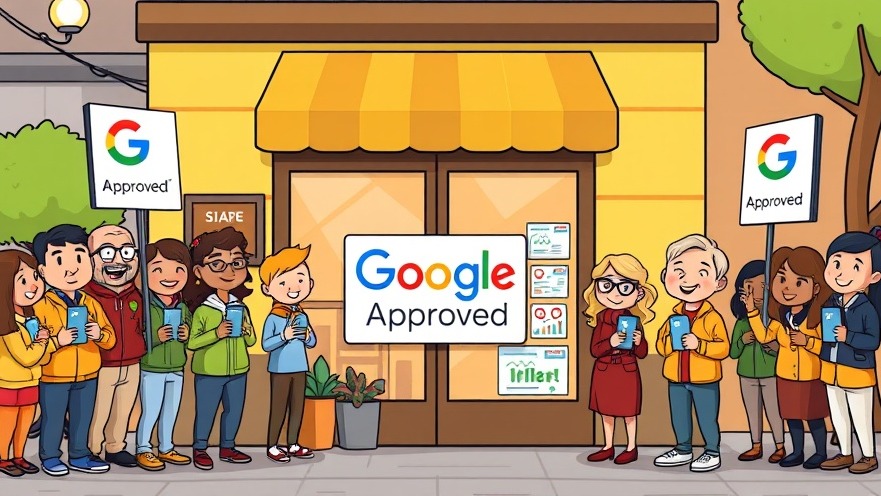Your website is your business’s front door, but what happens when Google doesn’t even knock? Meet Jenna, a small business owner who poured her heart into her online store, only to find her best pages buried in search results. Sound familiar? You’re not alone—Google might be skipping your site’s most important pages, costing you customers. But don’t worry, we’ll show you how we helped a tech company skyrocket their traffic by 96% in six months, and how you can do the same.
Key Takeaways
Google might not be showing your best pages because it’s wasting time on unimportant ones.
Simple fixes, such as cleaning up your site and submitting a sitemap, can boost your visibility.
Telling Google exactly which pages matter helps you attract more customers.
Real businesses have doubled their traffic by following these steps—you can too.

Why Google’s Missing Your Best Pages
Imagine Google as a librarian with only a few minutes to browse your website’s “book.” If it gets stuck on old, dusty pages, it won’t find the shiny new ones you want customers to see. This is called a crawl budget—the time Google spends looking at your site. When it’s wasted on junk pages, your important pages (like your services or products) don’t show up in search results.
For example, a software company we worked with had 30,000 pages Google could visit, but only 1,000 were important. Google was distracted by old blog tags and test pages, so their sales pages were invisible. After fixing this, their monthly visitors jumped from 13,239 to 25,988—a 96% increase!
What this means: Google needs help finding your best content. Let’s walk through how to make that happen.
Step 1: Clean Up the Junk (Fix Index Bloat)
Index bloat is when Google spends its crawl budget on pages that don’t matter, like old event pages or duplicate links. Think of it like clearing out your closet—keep only what’s useful.
Here’s how to find those junk pages:
-
Go to Google and type these searches (replace “yourdomain” with your website):
site:yourdomain.com inurl:http://
site:yourdomain.com inurl:/tag/
site:yourdomain.com inurl:/author/
site:yourdomain.com inurl:/page/
site:yourdomain.com inurl:www.
-
Look for pages like:
Old event pages (e.g., “2020 Sale”)
Duplicate links (e.g., “/page/2/”)
Blog tags or author pages
Test or checkout pages
To stop Google from visiting these pages, you can:
Add a “noindex” tag (a code that says, “Google, skip this page”).
Block them in a file called robots.txt.
Use Google Search Console’s Removals tool to hide them.
Example: A local bakery we helped found 500 tag pages (e.g., “/tag/cupcakes/”) clogging their site. After removing them, their main product pages ranked higher, bringing 20% more clicks in a month.
“The best way to optimize your site is to make Google’s job easier.”
— Rand Fishkin, SEO Expert
Step 2: Give Google a Map (Submit an XML Sitemap)
An XML sitemap is like a table of contents for your website. It tells Google, “Hey, these are the pages I want you to show people.” Without one, Google might miss your best content.
Here’s how to create and submit one:
-
If you use WordPress:
Install a plugin like Yoast or RankMath.
Turn on the XML sitemap feature (it’s usually at /sitemap_index.xml).
-
If you don’t use WordPress:
Use a tool like Screaming Frog to scan your site and create a sitemap.
Or try XML-Sitemaps.com (free for up to 500 pages).
-
Upload your sitemap in Google Search Console:
Go to “Sitemaps,” type “sitemap.xml,” and click “Submit.”
Example: A fitness coach’s website had no sitemap, so Google ignored her workout plans. After submitting one, her pages appeared in search, gaining 150 new clients in three months.
Stat: Sites with XML sitemaps get indexed 50% faster than those without (Ahrefs, 2024).
Step 3: Speak Google’s Language (Fix Hreflang)
If your website serves different countries or languages (like English for the U.S. and U.K.), hreflang tags tell Google which version to show. Without them, Google might show your U.K. page to U.S. customers, confusing them.
For example:
<link rel="alternate" hreflang="en-us" href="https://domain.com/us/page" />
<link rel="alternate" hreflang="en-gb" href="https://domain.com/uk/page" />
Common mistakes we fixed for our tech client:
Missing tags for some pages.
Wrong country codes (e.g., “en” instead of “en-us”).
No “x-default” tag (a backup page for unspecified regions).
Example: A travel agency’s U.S. pages were showing in Canada. After fixing hreflang, their bookings from the right regions rose by 30%.
Step 4: Build Trust with Great Content (Topical Authority)
Google loves websites that prove they’re experts on a topic. This is called topical authority. You can build it by writing blog posts about specific topics related to your main pages.
Here’s how:
Use a tool like Ahrefs to find easy-to-rank topics (look for “Keyword Difficulty” under 10 and questions with 4+ words).
Write detailed blog posts answering those questions.
Link these posts to your main pages (e.g., your services or products).
Example: A plumber wrote blogs like “How to Fix a Leaky Faucet in 5 Minutes” and linked them to their service page. Their rankings for “plumber near me” jumped, boosting calls by 25%.
Stat: Sites with 10+ related blog posts rank 3.8x higher than those with unrelated content (SEMRush, 2023).

See How Digital Marketing Can Drive More Traffic to Your Website
Brand Voice Strategy: Let our team help you create your brand voice to attract your ideal customer.
Market Growth Opp Research: Let our team show you where you can gain additional traffic that you’re missing.
Local SEO: Unlock more SEO traffic. See real results. Dominate your local market.
Dominate Google: Let us get your company to the top of Google.
Competitive Link Analysis: Know what your competitors are doing.
Geo-Targeting: Let us find your customers in your desired location.
Content Marketing: Our team creates epic content to be shared, generate links, and attract traffic. We know the secret recipe for success.
Paid Media Advertising: Effective paid strategies with clear ROI. You pay per result with us.
Blogging Services: Let us create a blog that will help you rank.
Search Box Optimization: Owning a keyword in your local area is the best way to dominate your local market.
Search Price Optimization: Not only can you own the keyword in your local area and nationally, but you can control your advertising cost by getting out of the price war that exists in pay-per-click advertising and achieve a higher ROI.
Marketing Consulting: Develop tailored strategies to grow your brand and maximize impact.
Frequently Asked Questions (FAQs)
Why is Google not indexing my website?
Google might not index your site if it’s wasting its crawl budget on unimportant pages, like duplicates or old tags. Fix this by removing junk pages and submitting an XML sitemap.
How do I submit an XML sitemap to Google?
Create a sitemap using tools like Yoast (for WordPress) or Screaming Frog. Then, go to Google Search Console, click “Sitemaps,” enter “sitemap.xml,” and submit.
What is index bloat, and how do I fix it?
Index bloat happens when Google crawls useless pages, like old blog tags. Use search operators (e.g., site:yourdomain.com inurl:/tag/) to find them, then block them with noindex tags or robots.txt.
How does hreflang help my website?
Hreflang tags tell Google which version of your site to show based on language or country, preventing confusion for users in different regions.
How can I increase organic traffic fast?
Clean up index bloat, submit a sitemap, fix hreflang, and write blog posts on related topics. These steps helped a client boost traffic by 96% in six months.
Your website is ready to shine, but Google needs a nudge to notice it. Just like Jenna, who turned her online store into a customer magnet, you can make your site work smarter, not harder. Don’t let your best pages stay hidden—take action today and watch your traffic soar. I hope you enjoyed reading this blog post. If you want to be our next success story, have my team do your marketing. Click here to book a call!
 Add Row
Add Row  Add
Add 








Write A Comment